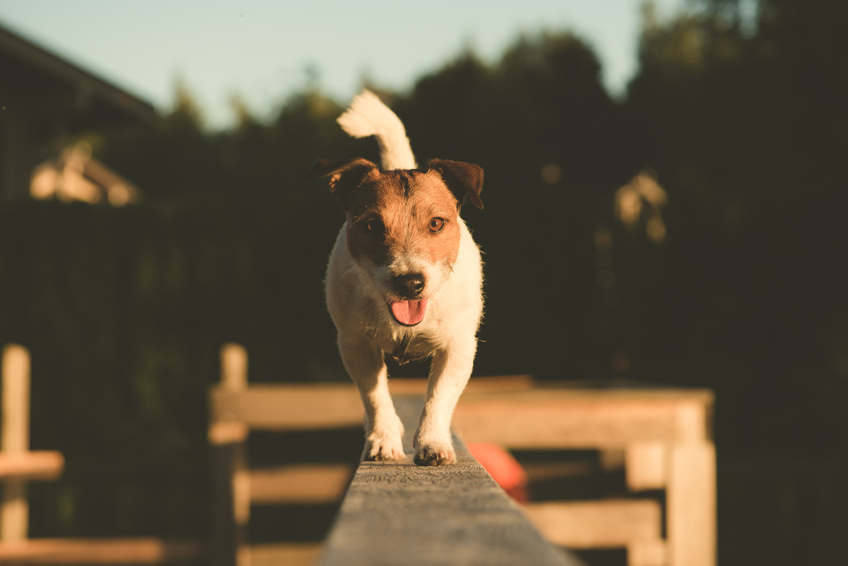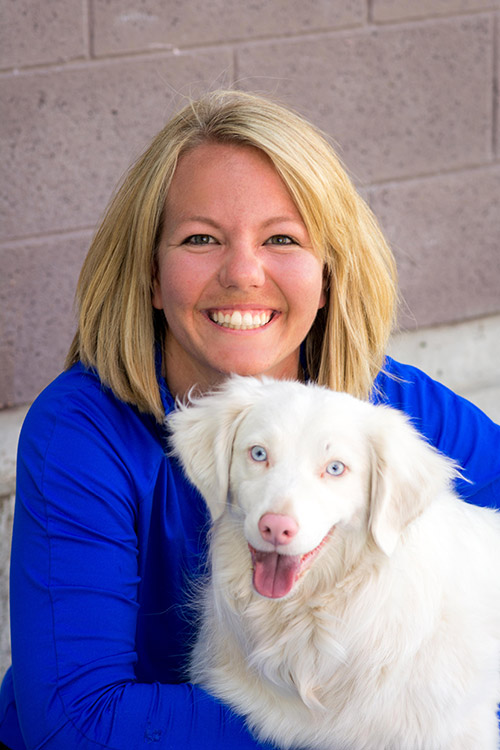 You’ve most likely heard about the benefits of a physical fitness program for your dog. Weight loss, enhanced learning, longevity, and overall improved heath are just a few of the positive impacts a healthy lifestyle can have for your four-legged friend. You want to jump on board and get started right away but something is holding you back. Maybe you are asking yourself where do I start? We have the answer!
You’ve most likely heard about the benefits of a physical fitness program for your dog. Weight loss, enhanced learning, longevity, and overall improved heath are just a few of the positive impacts a healthy lifestyle can have for your four-legged friend. You want to jump on board and get started right away but something is holding you back. Maybe you are asking yourself where do I start? We have the answer!
Goal setting!
You may be thinking… “goal setting is only for businesses, or people looking to further their careers or certain aspects of their lives.” In reality, the principles are universal and can be applied to any scenario.
One common goal setting strategy follows the S.M.A.R.T principals. S.M.A.R.T stands for Specific, Measurable, Attainable, Realistic, and Timely. We can apply each of these concepts to what we’d like to accomplish with our dogs.
Let’s break it down into each component.
S-specific
Being specific about what we want to accomplish makes it more likely that our goals will be attained. If we simply say we want our dog to be in shape, we haven’t answered specific questions about what “in shape” looks like. Answering questions such as what, when, where, and why will make our goals start to take shape. For example, saying I want to start a fitness program with Fido three days a week so we can hike more together is better than saying I want Fido to exercise more. Another example may be, I would like to compete in fly ball competitions in the summer instead of Fido and I should join a competition. Having a specific goal makes it easier to set the steps needed to reach that goal.
M-measurable
One important aspect of fitness is being able to see and measure progress. In order to do that we have to establish a starting point and have the proper measurement tools.
With any exercise routine there is a logical place to start. It begins with assessing strengths and weakness and then building a routine around them. For example, your dog may be able to sit up on its hind end to get a treat but may not be able to stand from a sitting position without moving his front feet forward. Knowing our dog’s abilities helps us take measurable steps to reach a specific goal.
Additionally, we can set measurable goals by asking ourselves such questions as how much or how many. This information will also guide us through the steps needed to reach our goal. For example, we can look at how many days a week we want our dogs to exercise or how many sets or repetitions we want them to do in a session. Take for example the bow. We can say once Fido can hold a bow position without breaking for five seconds, or can perform five sets of five bows without tiring, we can move on to the next step.
The more a goal is organized and structured the more attainable it becomes. If we just say we want to climb a 14,000ft mountain but we don’t know what that really looks like or what’s involved, then it may seem out of our reach. But, if we sit down and set timelines, mini goals, and have a picture of what the final product looks like it will feel much more attainable. For example, if we want to do Rally with our dog at a competitive level we need to learn everything we can about the sport, what’s involved, and set the steps in motion to get there.
R-realistic
When setting a goal we must be willing and able to do what it takes to get there. Set a goal that is too high and you may feel as though you are never making any progress. Set a goal that is too low and the motivation to get the job done may be lacking. You may look at it and say, “oh that’s easy, I’ll just do that tomorrow.” Then you run the risk of potentially getting stuck in a never-ending circle of procrastination.
Knowing your dog’s as well as your own limits will help you set realistic goals. If you have a 12-year-old retired sled dog he may not be able to go for a 10 mile run anymore, but he may still be able to walk for five. Just getting out there and doing something can often times be the biggest hurdle. Setting unrealistic goals and expectations can be a recipe for failure.
T-timely
When it comes to goal setting, being realistic about the time it takes to reach your goals is important. It doesn’t suffice to just say I want my dog to lose 10 pounds. It’s better to say, I want my dog to lose 10 pounds in five months. This way you can mark your calendar and set mini goals such as two pounds per month to reach that final goal weight. As you check progress at each point in time you will be able to adjust as need be to keep on track or change strategies.
When it comes to setting goals for the New Year keep these strategies in mind.
Also remember that not all goals are easily attained and there may be bumps in the road but with the right plan and a clear picture of the skills and resources needed, anything is possible!
 About the Author: Genevieve Cahill, founder of Modern Animal Behavior has been a Certified Veterinary Technician for 15 years. All throughout her life she has been very passionate about two subjects, fitness and behavior. She completed her two undergraduate degrees in Psychology and Communication and is now pursuing her Masters Degree in Companion Animal Behavior Counseling. Recently, Genevieve found a way to merge her two passions via the FitPAWS Master Trainer/ University of Tennessee Canine Fitness Trainer program and her masters thesis work researching how exercise enhances learning/behavior in shelter dogs. Genevieve believes that behavior and exercise can be completely intertwined and is passionate about bringing that message to pets and their owners. Genevieve’s background as a Certified Personal Trainer through the National Academy of Sports Medicine (NASM) and her many years as a Veterinary Technician have prepared her to jump right into this up and coming world of canine fitness.
About the Author: Genevieve Cahill, founder of Modern Animal Behavior has been a Certified Veterinary Technician for 15 years. All throughout her life she has been very passionate about two subjects, fitness and behavior. She completed her two undergraduate degrees in Psychology and Communication and is now pursuing her Masters Degree in Companion Animal Behavior Counseling. Recently, Genevieve found a way to merge her two passions via the FitPAWS Master Trainer/ University of Tennessee Canine Fitness Trainer program and her masters thesis work researching how exercise enhances learning/behavior in shelter dogs. Genevieve believes that behavior and exercise can be completely intertwined and is passionate about bringing that message to pets and their owners. Genevieve’s background as a Certified Personal Trainer through the National Academy of Sports Medicine (NASM) and her many years as a Veterinary Technician have prepared her to jump right into this up and coming world of canine fitness.

